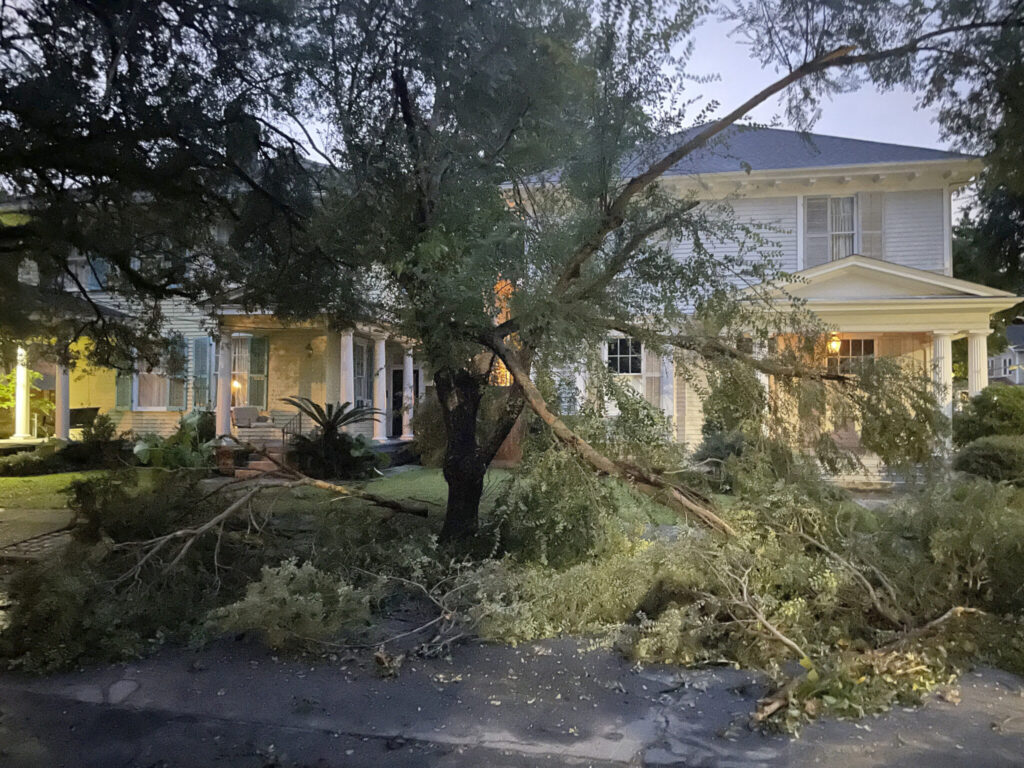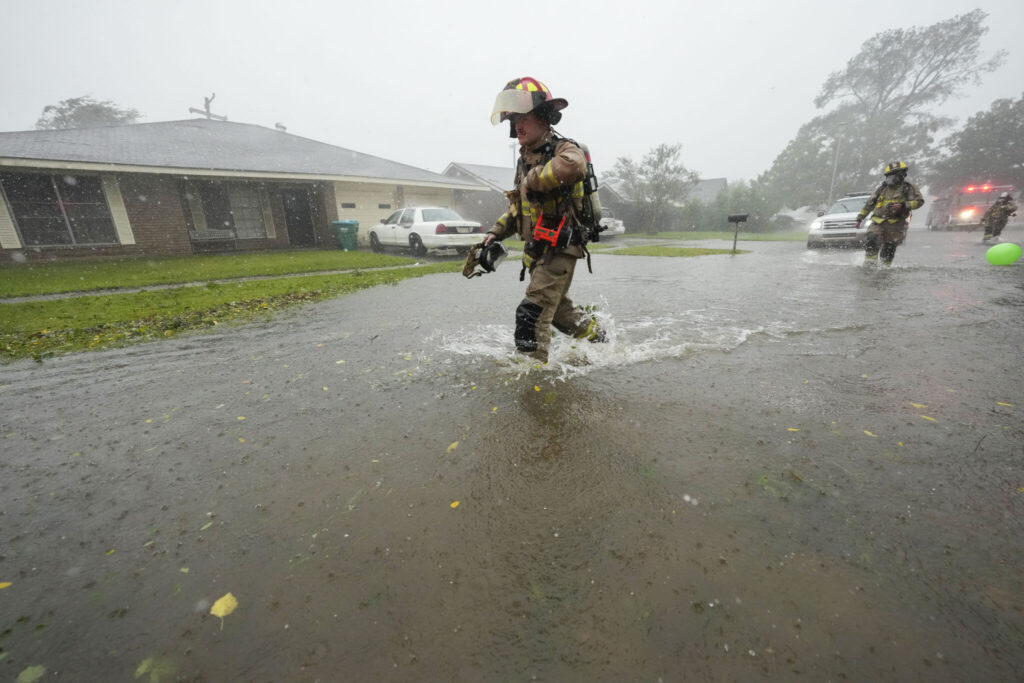Hurricane Francine impact/ Louisiana power outages/ flooding from Francine/ Newslooks/ MORGAN CITY/ La./ Hurricane Francine, now downgraded to a tropical depression, left a trail of power outages and flooding as it moved inland across Louisiana and Mississippi. The storm, which struck Louisiana as a Category 2 hurricane, knocked out power to over 390,000 homes and businesses and caused extensive damage to infrastructure. Rescue operations are underway, and the storm is expected to weaken further as it moves north.

Francine Weakens Overland, Leaving Floods and Power Outages: Quick Looks
- Storm Impact: Hurricane Francine weakened to a tropical depression after causing widespread flooding and power outages in Louisiana and Mississippi.
- Power Outages: Over 390,000 outages were reported in Louisiana, with an additional 46,000 in Mississippi.
- Flooding: Coastal towns saw heavy flooding, with New Orleans streets covered in debris and water.
- Rescue Operations: Emergency responders are conducting rescues as the storm leaves behind flooded streets and damaged infrastructure.
Hurricane Francine leaves flooding & widespread power loss as It weakens
Deep Look
Hurricane Francine, which struck Louisiana as a Category 2 hurricane, weakened Thursday after wreaking havoc along the Gulf Coast. The storm caused widespread flooding and power outages as it moved inland, leaving over 390,000 homes and businesses in the dark across Louisiana. Another 46,000 outages were reported in Mississippi.
Francine made landfall in coastal Terrebonne Parish on Wednesday with winds reaching 100 mph (155 kph). The storm pummeled the region, which has still not fully recovered from previous hurricanes in 2020 and 2021. The fast-moving storm then headed toward New Orleans, delivering heavy rains and storm surges, triggering flooding and debris-strewn streets across the city.
New Orleans Flooded, Power Outages Spread
In New Orleans, much of the city awoke to a power blackout Thursday morning. While some blocks still had working streetlights, large portions of the city remained without electricity. The constant hum of home generators filled the air as residents navigated debris-covered streets.
One dramatic rescue occurred when a pickup truck was nearly submerged in floodwaters under an overpass. A local resident, Miles Crawford, waded into waist-deep water with a hammer, smashing the truck’s window to rescue the driver. The act of heroism, captured live on TV, highlighted the dangers brought by the storm.
“I’m a nurse, so I’ve got to save lives, right?” said Crawford, an emergency room nurse, after the rescue. Despite injuring his hand, he remained focused, adding, “We deal with things like that all the time, so it was nothing out of the ordinary.”
A Fragile Coastal Region Struggles
Francine’s impact was particularly harsh in the low-lying areas surrounding Morgan City, just 30 miles from the storm’s center. Residents faced severe flooding and structural damage, with many homes and businesses under threat from rising water levels.
Jeffrey Beadle, a 67-year-old resident of Bayou Louis, left his home as the storm approached. Returning Thursday morning to assess the damage, he said, “I don’t know what I’m going to find. I just hope everything’s okay.”
The National Hurricane Center downgraded Francine to a tropical depression as it moved north-northeast over Mississippi, with maximum sustained winds of 35 mph. The storm is expected to continue weakening as it heads into central Mississippi, bringing heavy rains and possible flash flooding to surrounding states.
Power Outages and Emergency Response
In response to the storm, Louisiana reported over 390,000 power outages early Thursday, while Mississippi recorded an additional 46,000 outages. Rescue efforts are ongoing, with Louisiana Governor Jeff Landry deploying the National Guard to assist in affected areas. The Guard is equipped with boats, helicopters, and high-water vehicles to support evacuation and search-and-rescue operations.
Sheltering with her mother outside Morgan City, Laura Leftwich witnessed the destruction firsthand. “Blasts of wind took away two large birdhouses outside,” she said, showing friends the flooded streets via video chat. While safe for now, Leftwich admitted, “It’s a little scary.”
Warnings of Flash Flooding and Tornadoes
The National Weather Service warned that parts of Mississippi, Arkansas, Tennessee, Alabama, Georgia, and the Florida Panhandle could receive 3 to 6 inches of rain, with isolated areas potentially seeing up to 10 inches. These areas also face the risk of flash flooding and isolated tornadoes as Francine moves further inland.
President Joe Biden approved an emergency declaration for Louisiana, expediting federal aid to assist in recovery efforts. Louisiana and Mississippi governors have both declared states of emergency, with additional resources being deployed to southern Mississippi.
The Aftermath of Francine
Francine is the sixth named storm of the 2024 Atlantic hurricane season, and it intensified quickly due to the unusually warm waters of the Gulf of Mexico. Though it weakened significantly after making landfall, its impact was widespread, leaving coastal areas inundated and infrastructure damaged.
Power restoration efforts are already underway, but it could take days or weeks for all residents to regain electricity. In the meantime, many are left relying on generators and waiting for updates on damage to their homes and neighborhoods.
The threat from Francine is not over yet, as officials warn of continued flooding and potential spin-off tornadoes in parts of Alabama and Florida.
Conclusion
As Francine weakens into a tropical depression, it leaves behind widespread flooding, power outages, and devastation across Louisiana and Mississippi. Rescue operations are ongoing, and the storm’s remnants continue to bring heavy rain and flood risks to other parts of the southeastern U.S.







